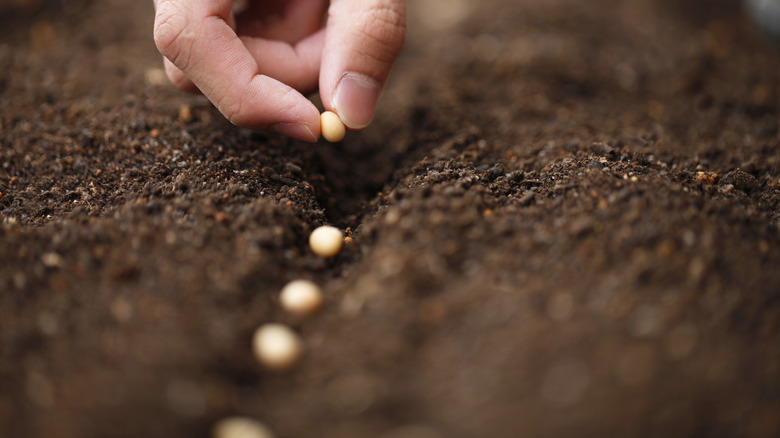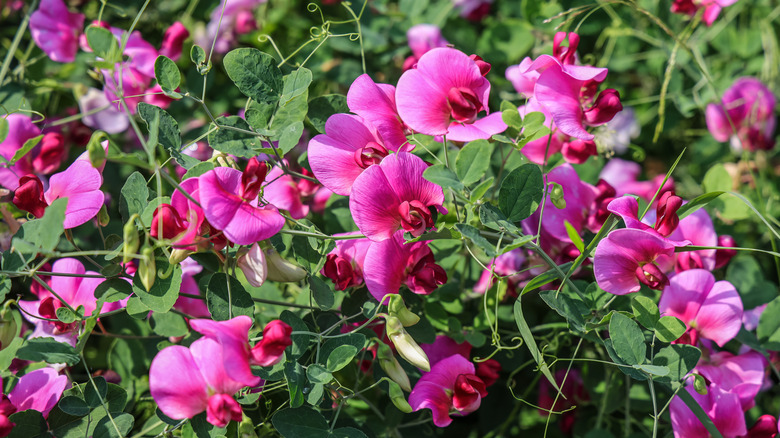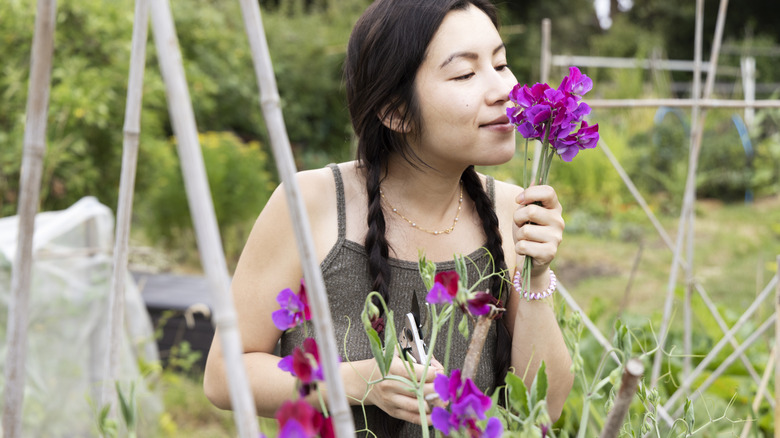The Sweet-Sounding Garden Flower You Should Start In October For Spring Blooms
Most flowering plants do best when planted in spring. However, if you want to get ahead of your garden and make your life easier during the planting season, then finding things to start in October can be the perfect option. Not all flowers and produce can handle cold temperatures, but some thrive in them, such as sweet pea (Lathyrus odoratus).
Not only do they sound sweet, but they have a beautiful and delicate fragrance that matches their name. You can also find them in a range of colors, including yellow, red, pink, white, and purple. There are other varieties of these flowers as well. For example, the everlasting sweet pea (Lathyrus latifolius) is the flowering ground cover you should grow for healthy soil. Others come in a variety of shapes and sizes, with some looking ruffled and others having much larger flowers than normal.
In addition to appearing and smelling good, they are sweet flowers you should grow to attract pollinators to your yard sooner. While a few varieties are able to handle low light, heat, and drought, a majority of them do best when the temperatures are cool and they are provided with plenty of water and sun. The reason sweet peas do so well when you start them in October is because they thrive in the cold. Many seeds prefer warmer temperatures, and actually do better when given warm soil and lots of light. However, sweet peas need lower temperatures in the germination phase, and they like to stay cool while they are growing, too. Waiting until after the last frost doesn't give the plants enough time to grow before it gets hot.
Where to grow sweet peas and the cool temperatures they can handle
If you live in a zone with a rather mild climate, the best option is to plant a sweet pea in the fall and let it overwinter. However, while this works for many people, it may not be ideal for everyone. As long as your area is warmer than USDA hardiness zone 7, you can plant them directly in the soil in the fall to have beautiful and early spring blooms. Sweet peas are able to thrive in most zones, ranging from 2 to 11.
For some zones in the more northern part of the United States, it may be better to plant them in the ground in late winter or early spring instead. However, you can still help them grow by starting them indoors in October and just moving them over when the temperatures are right.
Sweet peas can handle temperatures above 20 degrees Fahrenheit regularly. They are durable against frost and snow, so you don't have to worry about that. Essentially, as long as the soil is workable, it's ready for sweet peas and you can start setting them in the ground. You also need to pay close attention to their growing needs once they germinate. Sweet peas require a lot of water and regular fertilization to keep them happy and thriving.
How to have an easier time growing sweet peas
Germination of sweet peas tends to be a little challenging. They have pretty sensitive roots that make moving from a pot to your garden stressful for both you and the plant. They also take around two weeks to germinate. To further increase the chances of your sweet peas growing, you'll want to soak the seeds in water for 24 hours. It helps to speed up the process, and makes it easier for the green sprouts to escape their seed and start to grow. You can also gently scratch the seeds with a nail file before planting them to further assist your flowers.
While sweet peas are beautiful to grow in the garden, you do want to be careful growing them. They are toxic, especially for pets and small children, so they need to be kept well away from where curious mouths can reach them. It usually is only a problem after regular ingestion, but it's always best to be safe and keep curious children and pets away when possible. If growing these flowers sounds too complicated, there are also some amazing perennials you can plant in October, including hydrangeas, black-eyed Susans, and flowering onions.


